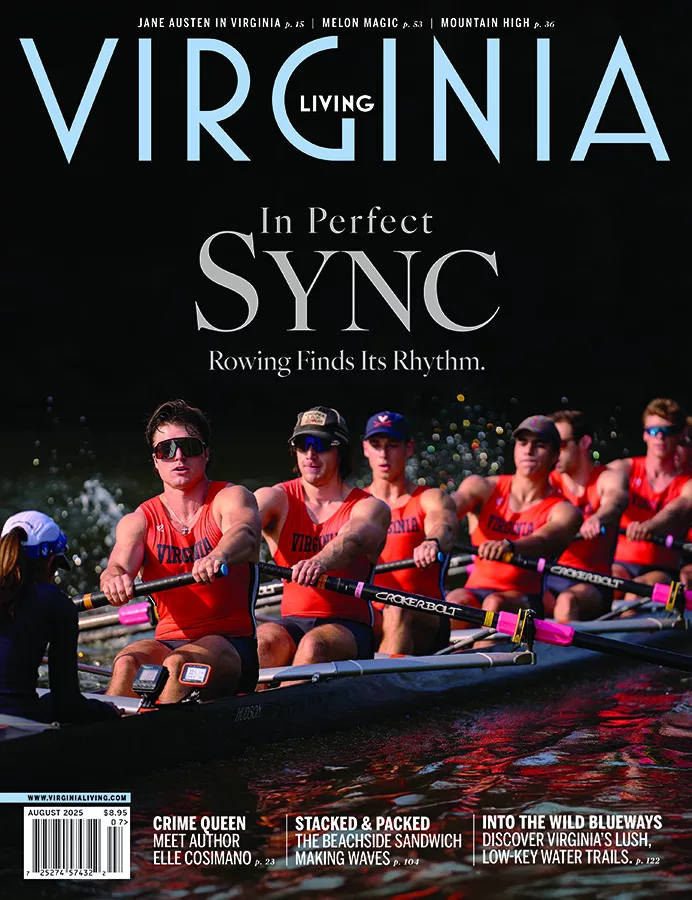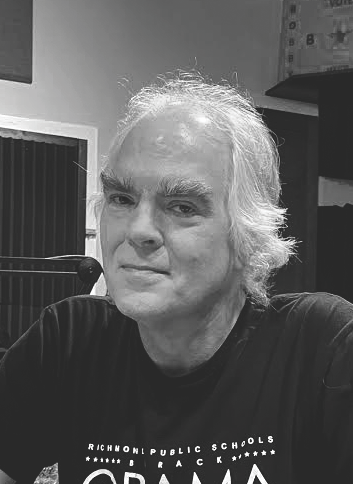The Fifes and Drums return to Colonial Williamsburg.

The revolutionary heartbeat of Colonial Williamsburg plays on. The flute-like trills, booming bass notes, and staccato rat-a-tat-tats of the Fifes and Drums resonate through the 301-acre living museum once again, signaling to troops and tourists alike that the hallowed tradition lives on.
It’s a welcome sound. Aside from a brief appearance at the governor’s inauguration in January, the Colonial Williamsburg Fifes and Drums have been silent for two years. “The corps is incredibly important to the museum,” says Justin Chapman, manager of historic trades at Colonial Williamsburg, who adds that halting the program was a big deal. “They are iconic for us. The corps is also a bridge between the museum and the community at large.”
From colonial times to the late 19th century, this martial din of tooting and paradidling signaled everything from war and death to dinnertime. On Revolutionary War battlefields, the Fifes and Drums corps cued military strategy while marching through smoke and blood and dodging cannon fire.
Back On The Beat

President and Mrs. Ronald Reagan reviewing the Fifes and Drums Corp
Today’s Fifes and Drums reenactors play communiques like “to arms,” “cease fire,” and “taps,” as well as 18th-century pieces such as “Yorkshire March” for weekly performances on Duke of Gloucester Street, and at annual events like the Grand Illumination in December and the Fourth of July celebration.
Established in 1958, the corps has played for presidents and foreign dignitaries, recorded at least five albums, and has performed internationally. “We bring the music from the past to the people who are visiting Colonial Williamsburg,” says Brodie Adams, lead drum instructor of the corps. “We can perform with as few as one fifer and one drummer or as many as 40 musicians. At full strength, for occasions like the Fourth of July, we blend our junior and senior corps and have as many as 80 to 100 people.” The junior corps is cultivated through local schools where students can begin training in fifth grade.
The corps will feel the ripple effect of this stoppage for years, Adams says. “We’ve had two years of not being able to bring anybody new into the program,” he notes. More than 40 recent graduates await acclimation this spring. “Right now we’re trying to establish our regular routine again.”
“It’s My Favorite Thing To Do”
Before President’s Day, 15 boys and girls practice in front of the Franklin Street building constructed especially for the Fifes and Drums program in 1980. They wear street clothes, without their signature tricorn hats and waistcoats, to concentrate on learning and re-learning tunes.

“There’s no set list except for an event like President’s Day, where we are playing state tunes,” says Adams. “A lot of the time we’ll just play whatever comes to mind.” David Degaraff, 17, talks over a short musical burst: “That was a ‘Duty Call,’” the lead fifer points out. “It’s a military ceremony of the day, specifically for a meal call. So we have all those ready to play.”
Degaraff, a Jamestown High School student, has learned more than 200 tunes—and carries a backbreaking binder of sheet music to prove it. He appreciates the discipline of the corps, “the coming to attention and the marching.” So does Spencer Johnson, 17, a bass drummer, also from Jamestown High. Being in the corps has taught him “important life lessons,” he says. “My dad was in the corps when he was younger and he really wanted me to join. I’m glad I did because now it’s my favorite thing to do.”
300 Tunes By Heart
The corps is organized in military ranks, says Rebecca Sterner, the lead fife instructor. “As recruits, they are considered privates. They need to pass a set of tunes and rudiments for drums or scales for fife, then they go up the chain to fife or drum sergeant, the highest non-appointed levels. They end up learning 238 tunes by the time they are seniors in high school.”

“We don’t play certain popular fife and drum songs because they’re outside the period,” Adams notes. “We perform pieces that would have been heard in the Revolutionary War.”
Once the young musicians become privates they earn $9.50 an hour performing with the corps. “It’s a symbiotic relationship,” says Chapman. “They get a lot of valuable experience out of it, including getting paid to take music lessons.”
“You do have to memorize a lot of tunes,” says Johnson, who says he’s learned nearly 300. “Once you get the hang of it, you can play them in your sleep.”
No Fife Experience Necessary
After five years in the corps, Degaraff says that he’s still getting the hang of the fife. “The way you blow over the aperture hole is very particular. You have to have your mouth in a certain shape and blow over it, not into it.”

“In the 18th century, the fifers and drummers could start as young as 10,” says Adams, who was a member himself from 2000 to 2008. “When I started, I had never played a drum before. Most 10-year-olds have never played a fife. But we don’t require any musical experience. We’re looking for kids who have a good attitude, who like history, and want to be a part of a group.”
So what’s the biggest challenge of teaching 21st-century kids how to parade around performing 18th-century military field music? “Tempo,” he laughs after a pause. “You give a 12-year-old a drum and what do they want to do? They want to play loud and fast.” ColonialWilliamsburg.org
This article originally appeared in the June 2022 issue.








